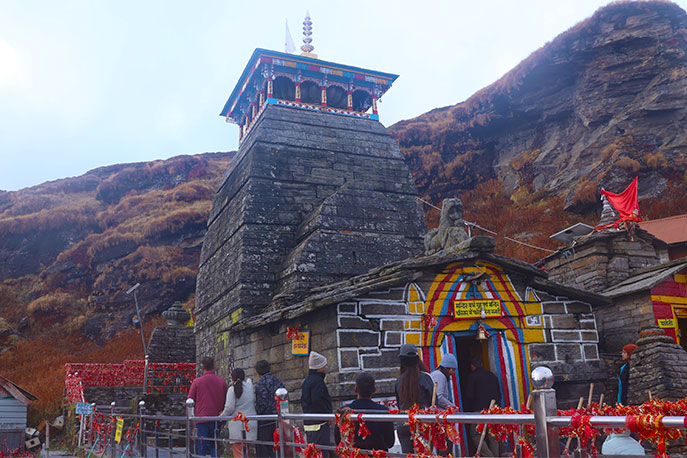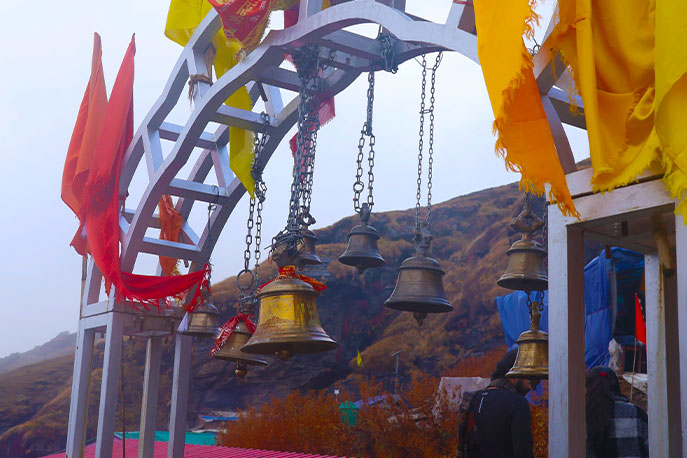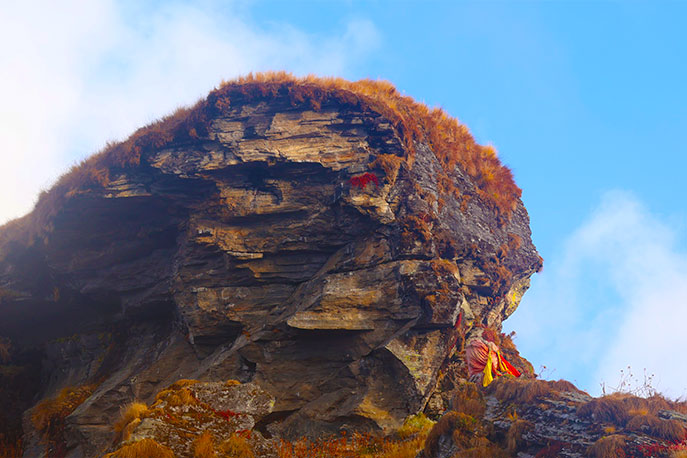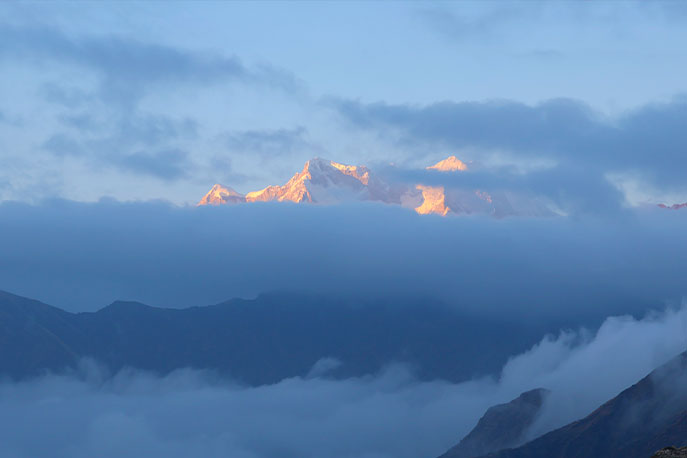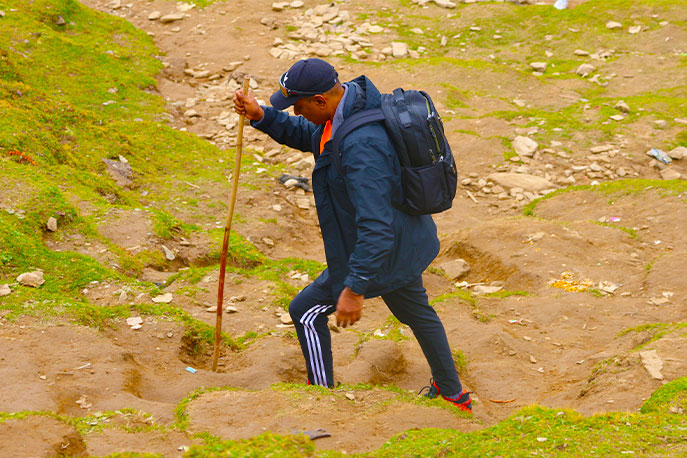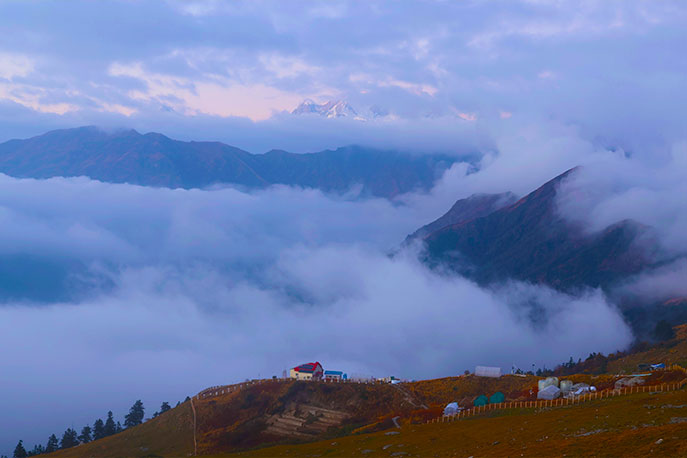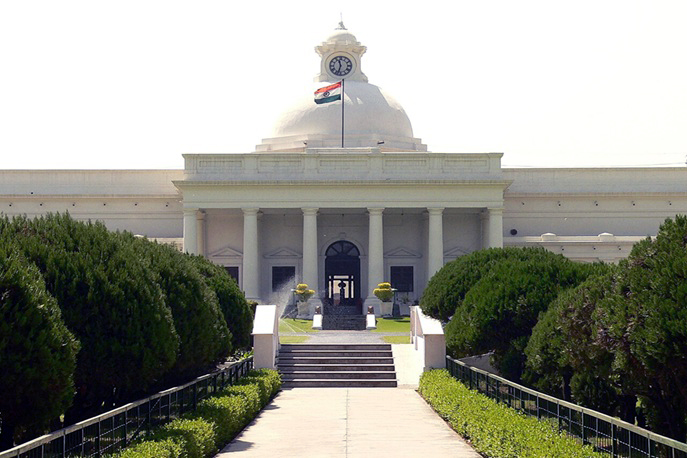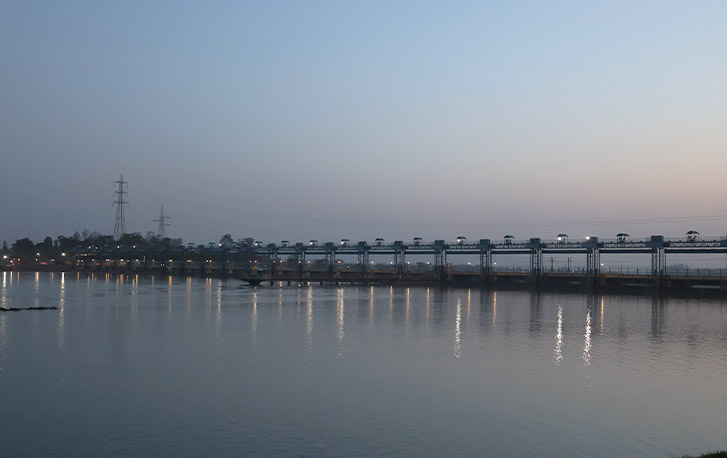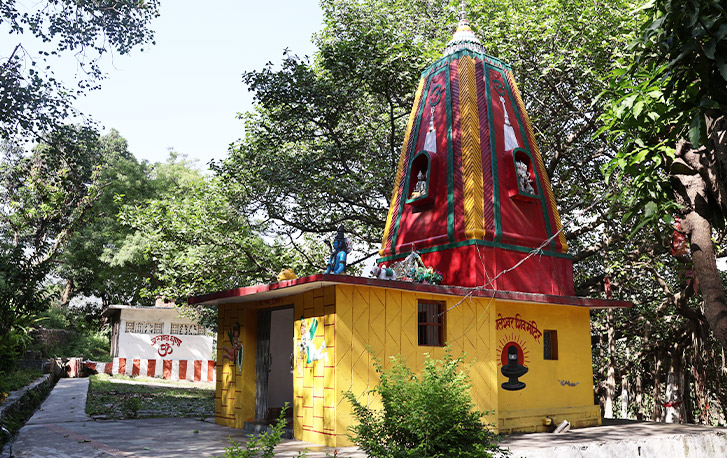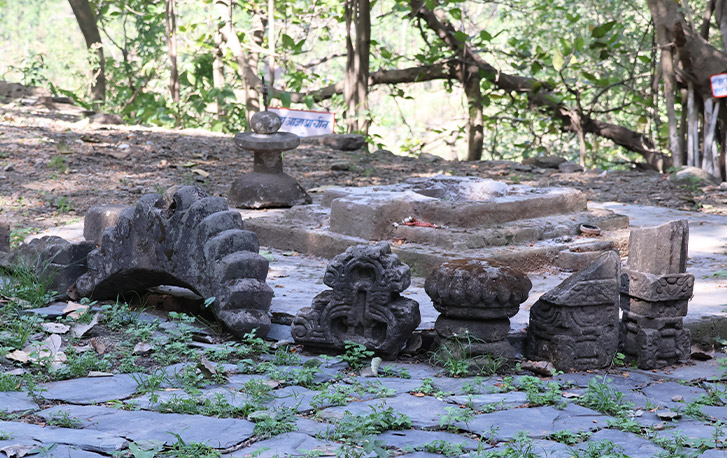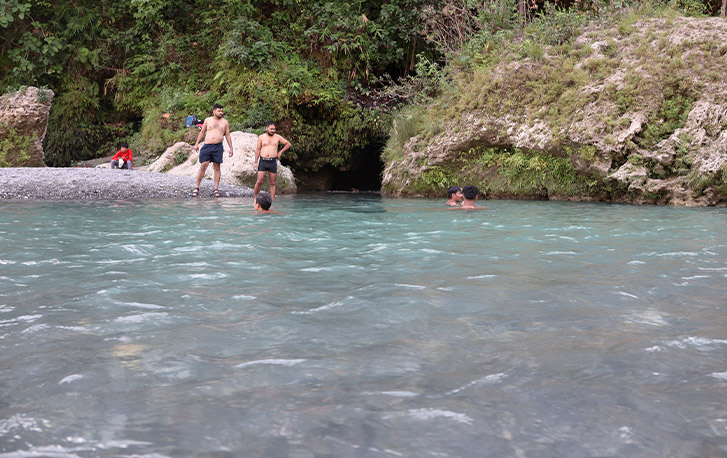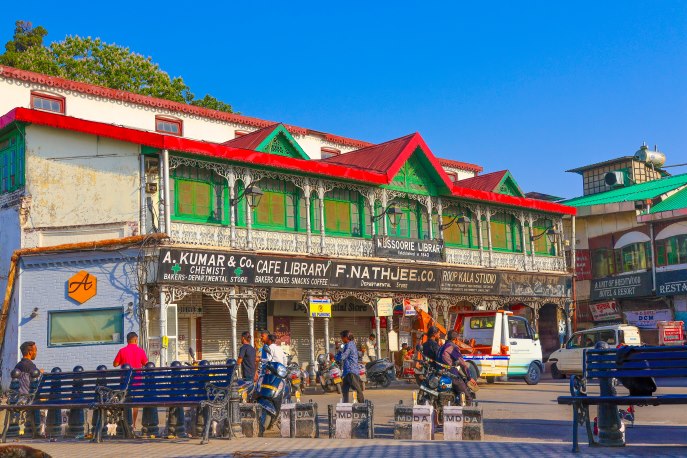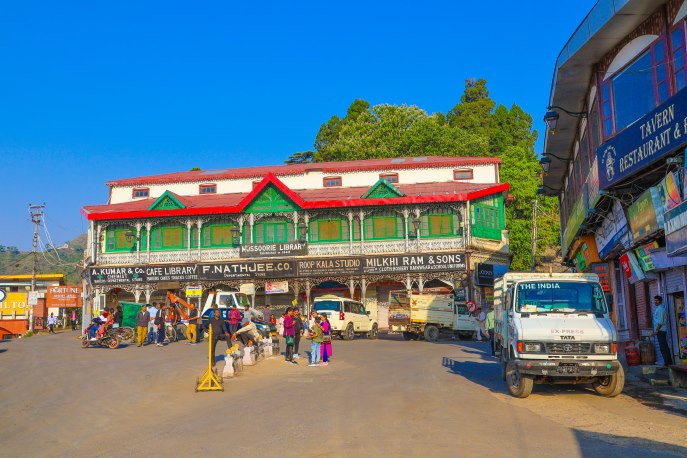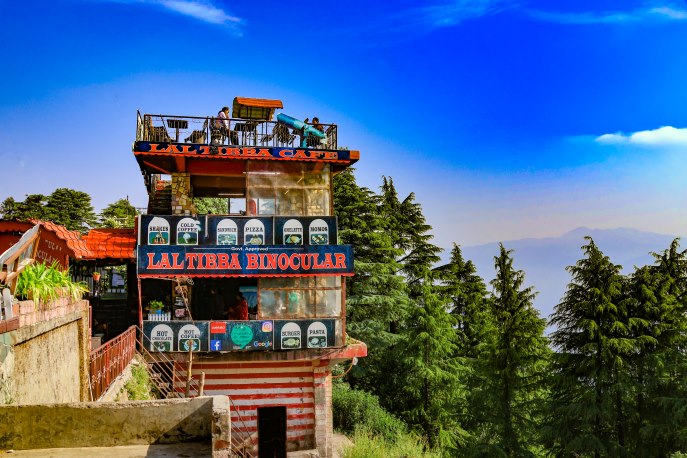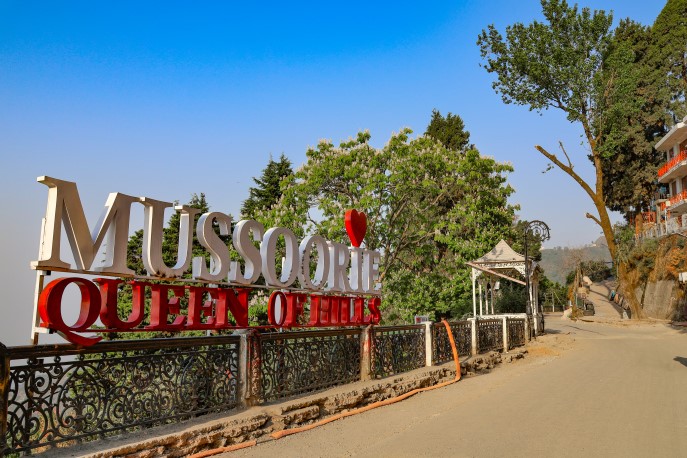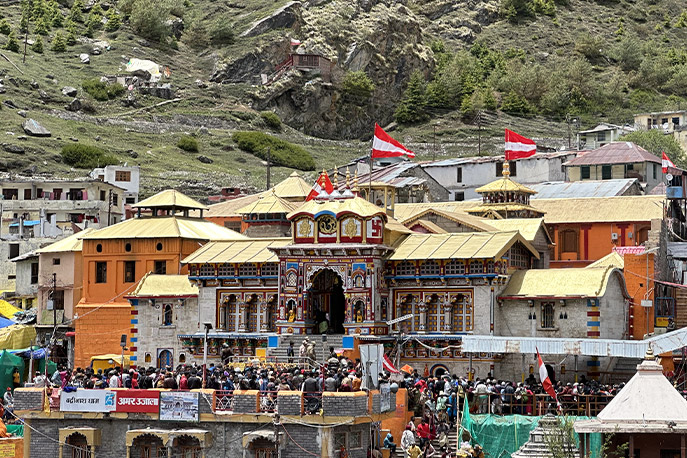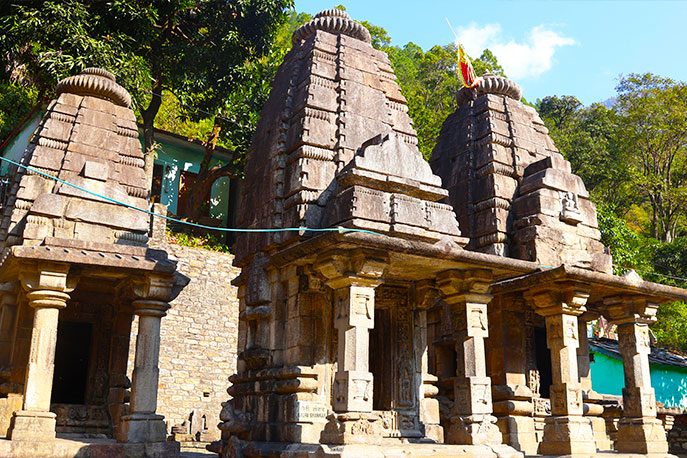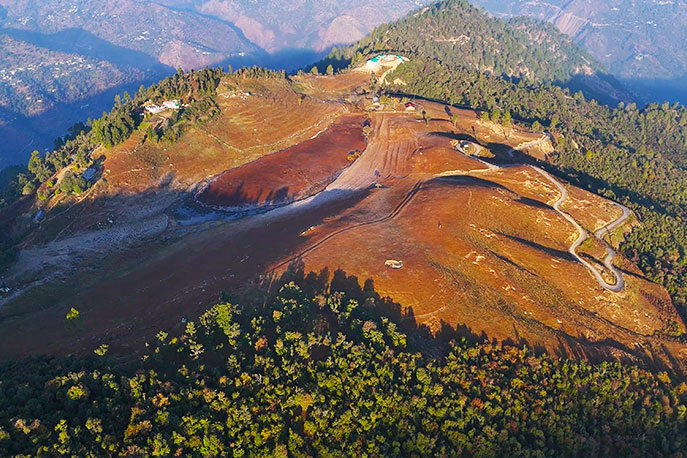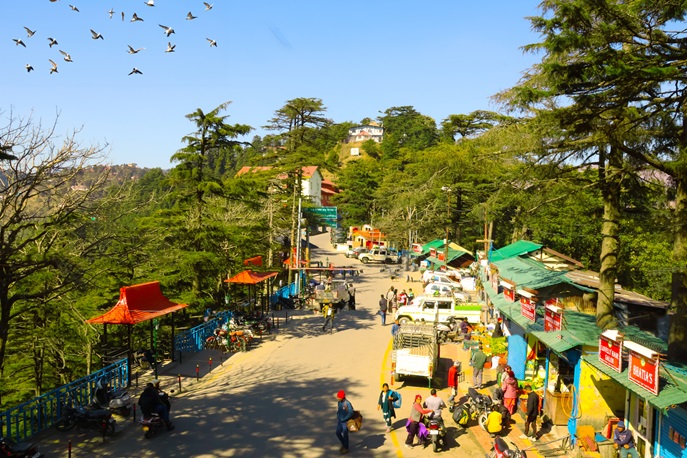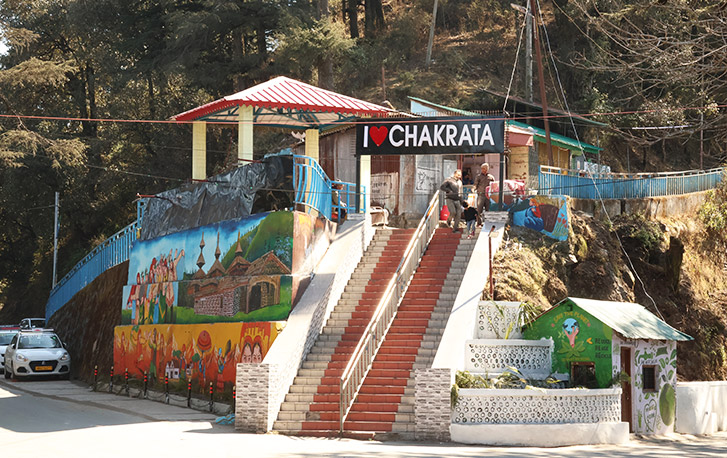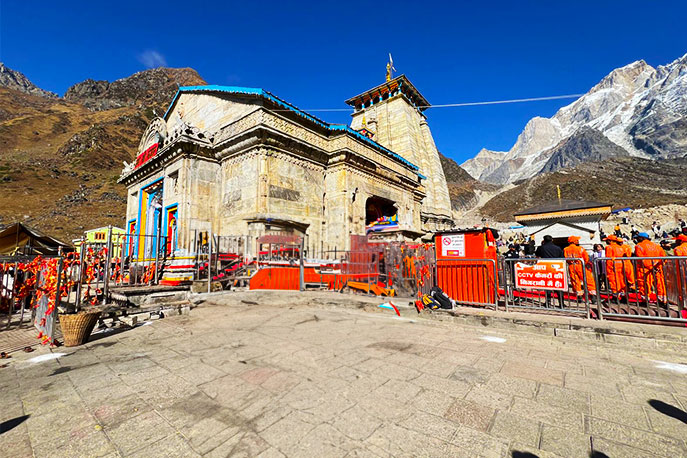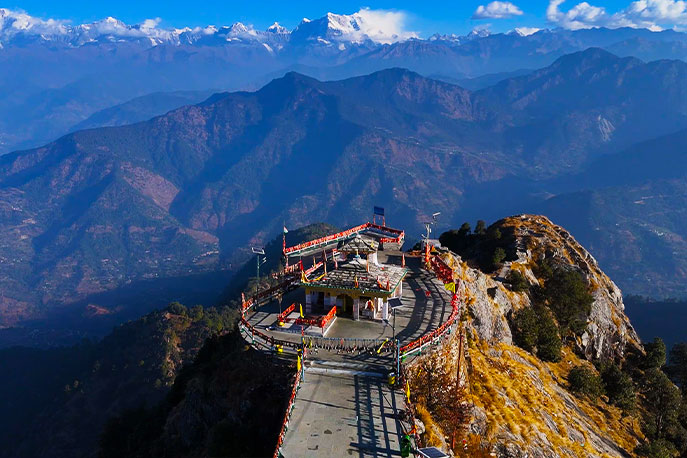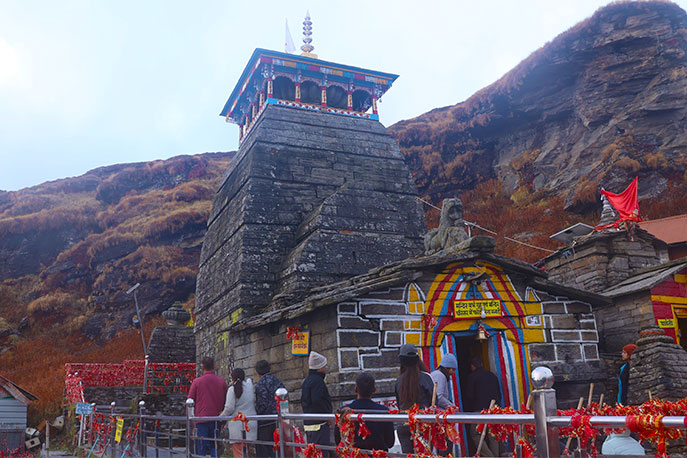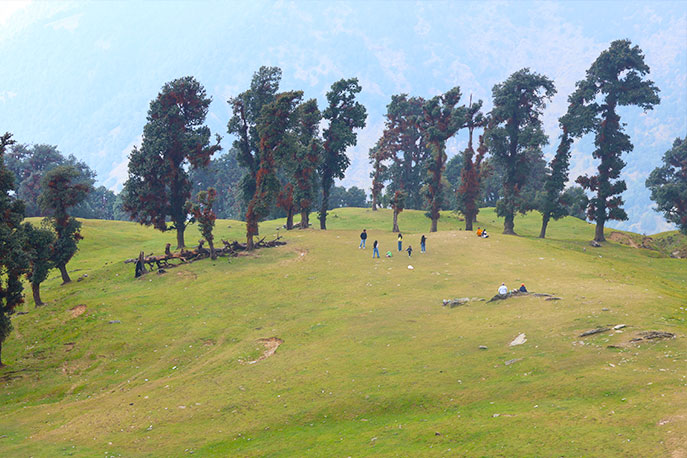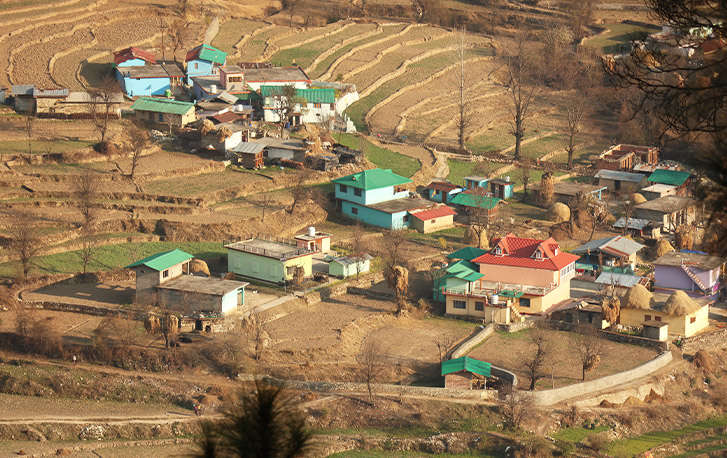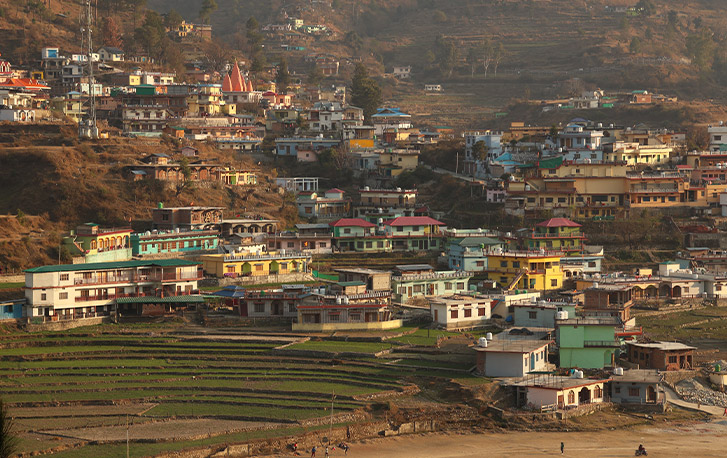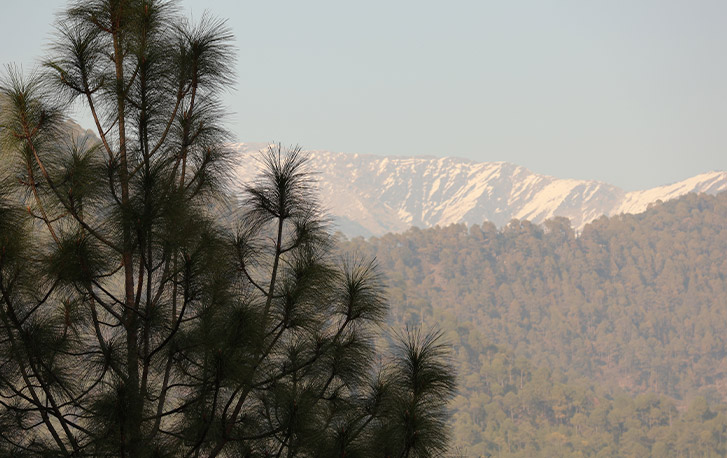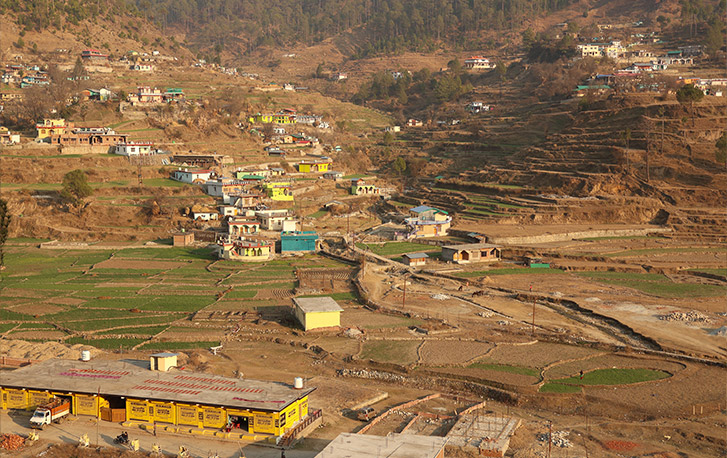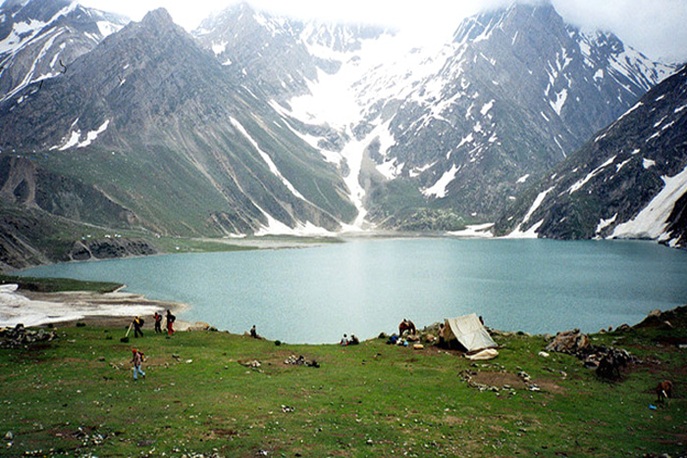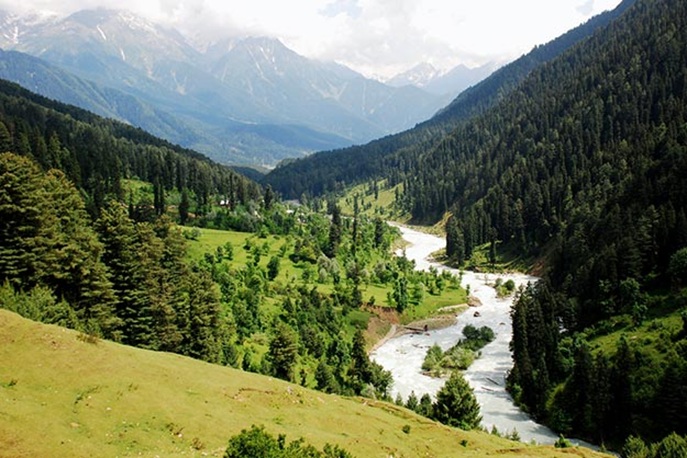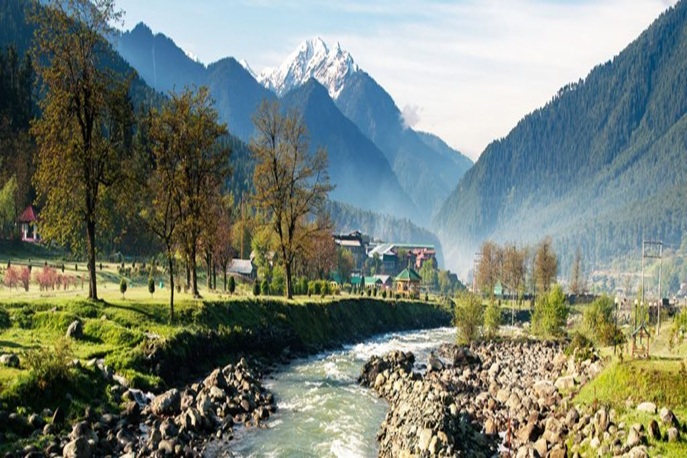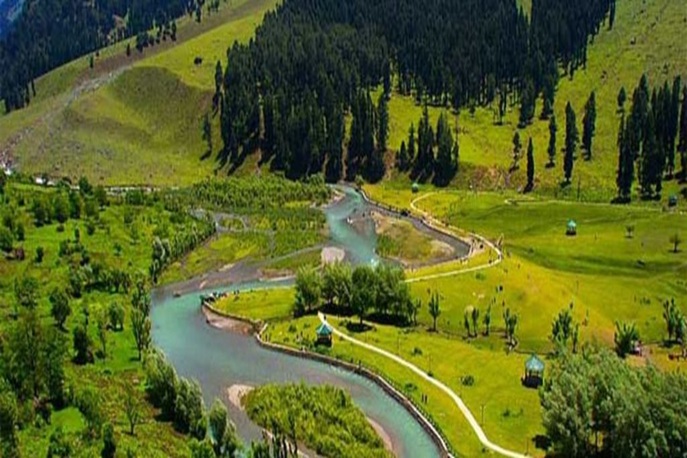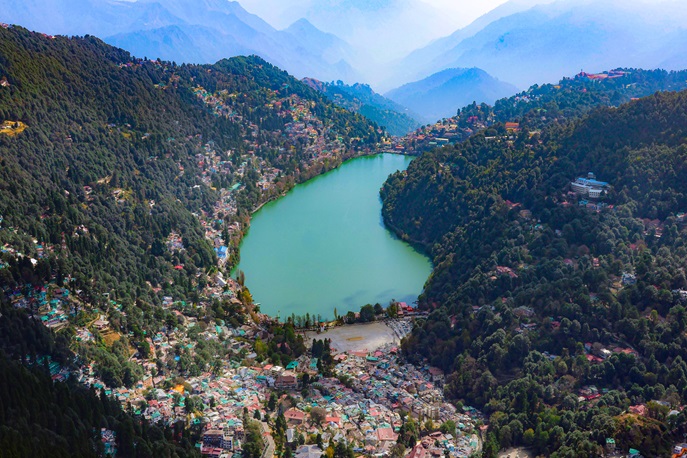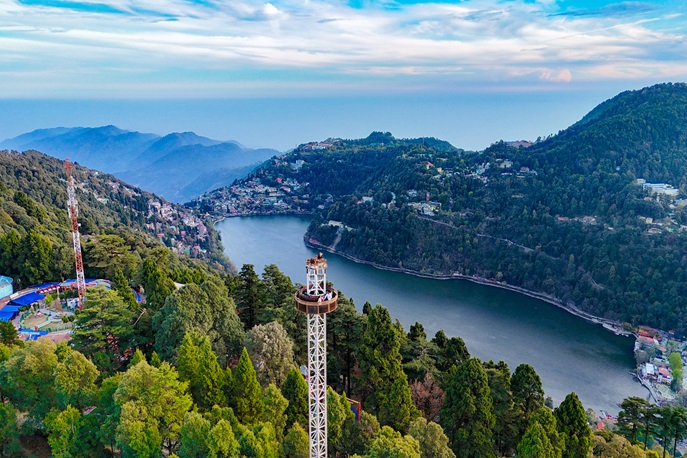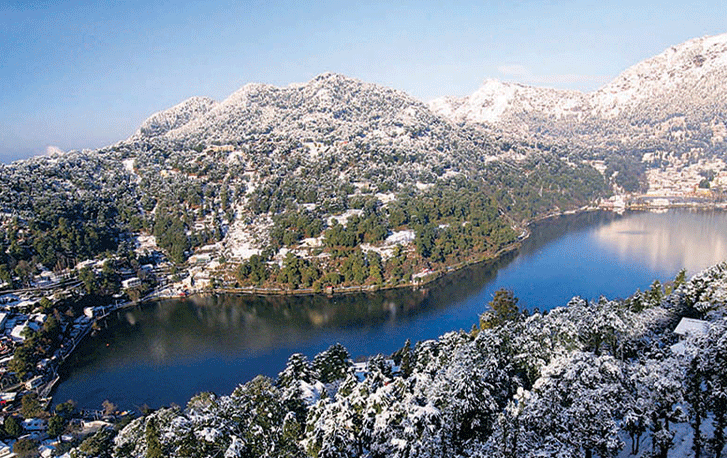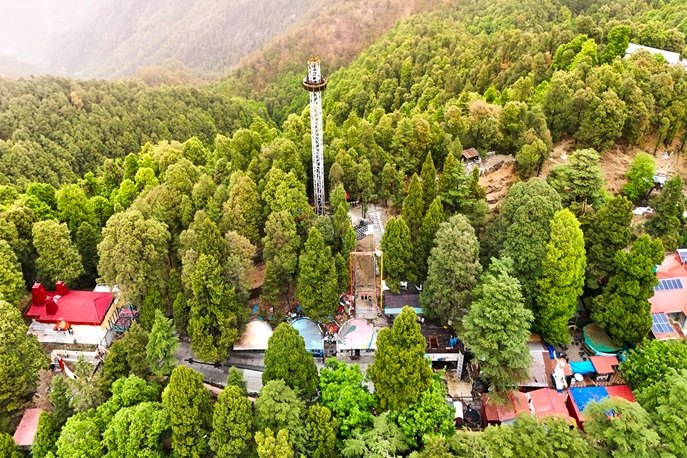Tungnath Temple
Related Video
About
Dedicated to Lord Shiva, Tungnath Temple is the highest Shiva Temple in the world. Tungnath means the "Lord of the Peaks", as several prominent peaks like Nanda Devi, Panchchuli, Kedarnath, and others can be seen from here. The temple's surrounding view is breathtaking from every sphere and beyond imagination. Every season here surprises visitors with its mesmerising landscape.
A moderate 3.5 km Chopta Tungnath Trek leads visitors to this sacred shrine. It is believed that the temple was built by Arjuna (the third Pandava) and was later discovered by Adi Shankaracharya. Despite its challenges, a multitude of devotees and tourists visit here, to experience the spiritual aura and natural beauty of Tungnath.
World's Highest Shiva Temple
Perched at an elevation of over 12,000 feet, Tungnath is the highest Lord Shiva temple in the world. Situated in the Rudraprayag district of Uttarakhand, its history dates back to the 8th century. Located just below Chandrashila Peak, the temple is linked with the Pandavas. During winter, the region receives heavy snowfall, turning this sacred place into a winter wonderland.
Third Kedar of Panch Kedar Circuit
Tungnath Temple is an important part of Panch Kedar and the third in the Panch Kedar circuit. Devotees with a resolution complete the entire Panch Kedar circuit, commencing from Kedarnath, followed by the second Kedar Madmaheshwar, then the third Kedar Tungnath, continuing toughest of all the Rudranath, and concluding at the fifth Kedar Kalpeshwar.
Situated at a humongous elevation of more than 12,000 feet above sea level, it is the highest among the Panch Kedar. Lord Shiva is worshipped here in the form of arms, as each temple of the circuit represents a different part of Shiva's body. Unlike the other Panch Kedar temples, where priests are from South India, the head priest of Tungnath is from a local village called Makkumath.
Chandrashila
Just 2 km above the Tungnath temple, there is a place called Ravana Shilla, home to the Chandrashila temple. From Chandrashila, visitors can view a majestic view of the Himalayan Range, including peaks such as Nanda Devi, Panchchuli, Chaukhamba, Neelkanth, Bandarpunch and Kedarnath. It is believed that, after killing Ravana, Lord Rama performed penance to please Lord Shiva, to get salvation for committing killing Brahma. Round the year, several adventure enthusiasts undertake the Chopta Chandrashila trek, which is filled with adventure and natural beauty.
Winter Seat
Due to heavy snowfall in winter, the temple's portal remains closed to devotees. During this time, the idol of the Lord Shiva, along with priests, moved to its winter seat called "Markandeshwar Temple", located 29 km away.
Opening and Closing Date
Similar to the Char Dham of Uttarakhand, the Tungnath Temple remains closed for six months during winter, from November to April. Along with Char Dham Temples, the BKTC committee announced both opening and closing dates of the Tungnath Temple. For 2025, the opening date of Tungnath Temple is May 2, 2025. On the occasion of Dusshera, the BKTC committee also announced the closing date of Tungnath Dham. The portal of Tungnath Dham will close for the devotees on November 6, 2025, at 11:30 AM.
Things to Do
When visiting Tungnath, devotees and travellers can engage in some activities; such as : -
Pilgrimage Dedicated to Lord Shiva and part of the Panch Kedar, Tungnath is a prominent religious site. Pilgrims often visit here to seek blessings of Lord Shiva. Birds Watching The region is home to many indigenous bird species, especially the Monal, which is the state bird of Uttarakhand. Besides this, Koklass Pheasant and Kalij Pheasant are known for the captivating sound that allures anyone. Trekking To reach the Tungnath temple visitors must undergo a moderate trek of 3.5 km that can be easily completed by an amateur. However, trails may become challenging during winters, especially in snowfall and may require a guide. Its trail provides a wonderful view of the mountains, lush green meadows and rhododendron bushes.
Entry Fees
As the Tungnath Temple lies within a forest reserve, visitors and devotees are required to pay an entry fee of Rs 200/- per person before commencing the trek.
Accommodation
Near Chopta, various lodging options are available such as hotels, resorts, and homestays. Apart from this, tents accommodations with basic amenities are also available in Chopta. Visitors can also find accommodation at Sari Village which is just 22 km away from the Chopta.
Food
Food options are limited in the region and mainly serves Rice, Daal, Vegetable, Maggie, Tea etc. Non-Vegetarian food and alcohol is not allowed and strictly prohibited in the area.
Mythology
According to legend, after defeating Kauravas, the Pandavas handed over their kingdom to their kin and went to Shiva to seek his blessings to atone for the sin of fratricide. During their search, they reached Guptkashi, where Bhim saw a bull grazing. Bhima understood that Lord Shiva was trying to disguise himself in the form of a bull. As soon as Bhim tried to hold the tail and legs of the bull, Shiva in the form of a bull disappeared into the earth.
Later, Shiva appeared at five different places in the Kedar Khand of Garhwal; his waist (hump) in Kedarnath, arms in Tungnath, face in Rudranath, navel in Madhyamaheshwar, and hair in Kalpeshwar. The Pandavas were very happy to see these five forms of Shiva, subsequently they built temples at these places, now known as the Panch Kedar. Pleased with their devotion, Shiva freed Pandavas from all sins. It is believed that one who completes the Panch Kedar circuit and ends it with the blessing of Lord Vishnu at Badrinath, attains utmost salvation.
Route Map
- Route map to reach the Tungnath last motorable point Chopta (233 km) : -
Dehradun (Haridwar)→ Rishikesh → Devprayag → Srinagar → Rudraprayag → Tilwara → Agastmuni → Chandrapuri → Ukhimath → Sari Village → Chopta
- Alternatively, visitors can also take another route map (282 km) : -
Dehradun (Haridwar) → Rishikesh → Devprayag → Srinagar → Rudraprayag → Gauchar → Karnaprayag → Nandprayag → Maithana → Gopeshwar → Mandal→ Chopta.
Important Tips for Travellers
- Book a round trip taxi from your respective location for convenient and comfortable travel.
- Taxis from Chopta to the nearest bus stand, like Ukhimath and Gopeshwar, charge high fares. It is recommended to book a round trip taxi in advance.
- Reserve your accommodation in advance, preferably close to the trek point, especially during the peak season.
- Free roadside parking is available for both four wheelers and two wheelers.
- Carry sufficient, as ATMs are not available in the region and mobile networks are limited.
- Fuel stations are not available in Chopta and its nearby areas. Refill your tank in Rudraprayag or the nearest petrol pump en route.
- Mule and Porter services are available during peak season, with charges between Rs 1,000/- to Rs 1500/- (one way).
- Along the trail, some snacks shops are available for tea and Maggie.
- Even in summer, temperatures remain low in the region, so it is advisable to carry enough woolens.
- Alcohol and Non-Vegetarian items are strictly prohibited in the region.
- Being a wildlife sanctuary, flying a drone is strictly prohibited
- Photography and videography is prohibited inside the sanctum sanctorum.
- To witness a stunning sunrise, start your trek early in the morning.
Trekking Essentials
- Visitors are advised to carry the following items during the trek: -
- Good trekking shoes and wearable.
- Raincoat.
- Emergency Lights.
- Water Bottle.
- Woolen.
- Multiple Power Banks.
- Walking Stick.
- Oxygen canister (if required)
Nearby Attraction
- Gopinath Temple
- Chopta.
- Gopeshwar.
- Deoria Tal
- Rohini Bugyal.
How to Reach
By Road: - The last motorable point to Tungnath is Chopta, around 248 km from Dehradun ISBT. Chopta can be accessed by road using bus, shared taxi and private cabs. From Chopta, the Tungnath is around 3.5 km from Chopta and needs to be covered by trekking. To access the site, visitors have some options, such as:-
- By Bus: State government buses are available from Dehradun, Rishikesh, Haridwar, Devprayag, Srinagar, and Rudraprayag bus stands. Buses operate up to Ukhimath and Gopeshwar Mandal, from where the remaining distance must be covered by shared taxi service. Only a limited number of buses operate on this route, and they depart early in the morning.
- Shared taxi: Union-operated shared taxis are available from all major places like Dehradun, Rishikesh, and Haridwar. However, these services are also available up to Ukhimath or Gopeshwar as per your preference.
- Hiring Cab/Taxi: Visitors can hire a cab to reach the location directly and conveniently. Cabs can be hired from Dehradun ISBT, Dehradun Railway Station, Rispana Bridge, Rishikesh, Haridwar and through online platforms.
- Own Vehicle: Visitors can also access the place using their own vehicle.
- Renting a two-wheeler: You can also rent a two-wheeler like Royal Enfield, Dominar, and others from various service providers based in Dehradun, Rishikesh and Haridwar.
By Rail: - If travelling by train, the closest railway stations are in Rishikesh and Haridwar, around 209 km and 233 km. From either station, visitors can hire a taxi or use public transport options like buses or union-operated shared taxis from the respective stands.
By Air : - The nearest airport is Jolly Grant Airport Dehradun, located around 223 km away. Visitors can hire a taxi from the airport or they can reach Rishikesh, around 16 km from the airport and continue their journey by bus or taxi.
Best Time to Visit
The ideal time to visit the site is from March to June and from September to December.
Height from Sea Level
Tungnath is located at an altitude of 3,680 meters (approximately), which is around 12,073 feet from sea level.
